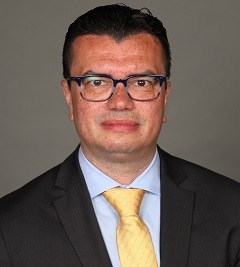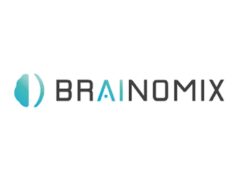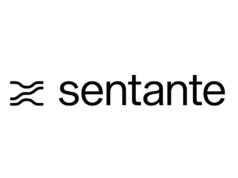 As medical accolades go, performing the world’s first robot-assisted neurointerventional procedure—a feat that Vitor Mendes Pereira and his team achieved back in 2019—is something any physician would be proud of. But, as a professor of Surgery and Medical Imaging at the University of Toronto, director of Endovascular Research and Innovation in the Department of Surgery at St Michael’s Hospital, and co-lead of the RADIS Lab (Toronto, Canada), this is just a snapshot of the pioneering work Pereira has done to help drive the neurointerventional space forward over the past decade. Here, he discusses these efforts with NeuroNews, outlines his vision for the future of stroke care and draws on personal experiences to advise aspiring neurointerventionists.
As medical accolades go, performing the world’s first robot-assisted neurointerventional procedure—a feat that Vitor Mendes Pereira and his team achieved back in 2019—is something any physician would be proud of. But, as a professor of Surgery and Medical Imaging at the University of Toronto, director of Endovascular Research and Innovation in the Department of Surgery at St Michael’s Hospital, and co-lead of the RADIS Lab (Toronto, Canada), this is just a snapshot of the pioneering work Pereira has done to help drive the neurointerventional space forward over the past decade. Here, he discusses these efforts with NeuroNews, outlines his vision for the future of stroke care and draws on personal experiences to advise aspiring neurointerventionists.
What initially attracted you to medicine, and neurointervention specifically?
I grew up on an island in the north-east of Brazil called São Luís do Maranhão. As a kid, I was always fascinated by technology and wanted to become an engineer. During my last year of high school, two events changed my life: I started dating Andrea, the love of my life, and my father was diagnosed with prostate cancer. I put my career plans on hold to help take care of my father, run our family’s farm, and stay close to Andrea. Supporting my father through his medical journey made me realise that if he had been managed appropriately, he likely would have survived his cancer. This realisation left me feeling helpless, so I decided to change my career to pursue medicine.
During my time in medical school at the Federal University of Maranhão (São Luís, Brazil), I was fascinated by the brain, and the precision of neurological examinations. I started shadowing a neurosurgeon, Periguari Lucena, and I knew from the first patient I helped treat that I would pursue neurosurgery. I did my neurosurgery residency at São Paulo State University (Botucatu, Brazil) and, during that time, a vascular neurologist, Cesar Raffin, turned my attention to stroke patients—while my preceptor, Marco Zanini, taught me all about brain aneurysms. I also did rotations in neurointervention under the supervision of Guilherme Caldas and his team and, after learning angiography techniques and the principles of intervention, I realised that was what I wanted to do!
Who have your mentors been and how have they impacted your career?
In 2005, I started the International Diploma in Neurovascular Diseases—coordinated by Pierre Lasjaunias—which was held in Thailand over two years. Shortly after, Professor Lasjaunias accepted me for a fellowship at the Bicêtre Hospital (Paris, France). He was a thoughtful and caring mentor who inspired me to “be precise”, by mastering neuroangiographic anatomy, and to understand embryology, disease pathomechanisms and genetics. Bicêtre was a great experience and, at the end of the fellowship, Professor Lasjaunias suggested that I continue my training with Jacques Moret—his friend, and one of the most talented neurointerventionists we had seen in our field.
In 2007–2008, I started the second year of my fellowship at the Rothschild Foundation, also in Paris, under the supervision of Professor Moret. He is highly technically skilled but also has a deep knowledge of anatomy. He is always thinking beyond, inspiring me to master procedural techniques and medical device use, and look for perfection from the planning to the execution of a treatment strategy. Working with his dream team—Charbel Mounayer, Laurent Spelle, Michel Piotin and Raphael Blanc—I have shaped my practice, and made friends for life. From time to time, I am still astonished remembering the day that Professor Lasjaunias called Professor Moret to introduce me for that fellowship position. I am blessed to have been mentored by two brilliant minds that helped to transform our field.

What is your proudest achievement to date in the neurointerventional space?
My greatest achievement is the creation of the RADIS Lab, a translational lab performing cutting-edge research, and applying the latest technological and scientific innovations to treat vascular diseases of the brain. A key strength of our lab is leveraging the close relationship between clinicians and scientists—such as my lab co-lead Nicole Cancelliere, a radiation technologist and master in neurosciences. We are leading the way in areas like robotics, artificial intelligence (AI), procedure simulation and new imaging technologies. Among our most pioneering and successful projects are the world’s first robotic aneurysm treatment; high-frequency optical coherence tomography (HF-OCT) imaging of the intracranial anterior circulation with a dedicated neuroimaging probe; and our lab’s input into the development of new devices, such as the Surpass Evolve flow diverter (Stryker) and the BossStent venous stenosis treatment device (Sonorous).
You recently became a LINNC course director—how did that happen, and what are your goals in this position?
The LINNC conferences, created by Professors Moret and Spelle, are the most comprehensive, continuous educational platforms in neurointervention. These were always my favourite meetings, where I would look for new treatment strategies and tips to better perform complex procedures. I have been part of LINNC Paris since I was a fellow, and—from 2011—have managed a live broadcasting centre from Geneva and, later, Toronto. In 2022, 25 years after the first meeting, they have invited me to become a course director. I am very honoured, but am aware that these are big shoes to fill. I am motivated to maintain LINNC’s innovative format by contributing my research background and experience with digital technologies.
In light of recent, positive studies, what do you think will be the next frontier for mechanical thrombectomy?
Thanks to advances in mechanical thrombectomy and innovative trial designs, we have been winning every single battle in the treatment of acute stroke—and it should be no different, if we consider that removing a clot in a brain vessel is one of the most powerful treatments in medicine. In the short term, next frontiers will be to conquer distal strokes, and improve outcomes with neuroprotection. The enhancement of cone-beam imaging will also allow ‘direct-to-angio’ approaches and workflow improvements. In the long term, I foresee remote robotic treatments being a gamechanger, not only offering access to care for patients in remote communities, but potentially connecting centres and redesigning stroke care models in different geographies as well.
What do you feel has been the most important development in this field during your career?
The last 15 years have seen a phenomenal innovative boom in neurointervention. In stroke, stent retrievers and large aspiration catheters have improved mechanical thrombectomy outcomes, resulting in a series of positive randomised controlled trials in all aspects of stroke treatment. In arteriovenous malformations (AVMs), ethylene-vinyl alcohol (EVOH) embolic agents dissolved in dimethyl sulfoxide (DMSO) made curative treatments of dural fistulas and brain AVMs through the arteries, or transvenous approaches, possible. In aneurysms, flow diverters have changed the treatment paradigm for wide-neck and large brain aneurysms, while intrasaccular devices have conquered the domain of bifurcation aneurysms.
Thanks to advances in mechanical thrombectomy and innovative trial designs, we have been winning every single battle in the treatment of acute stroke.
Which three novel technologies do you feel will have a significant, lasting impact in neurointerventional surgery?
In the future, I envision us doing neurointerventions like a pilot flies a plane—safe and sound, using technology to improve diagnosis, precision, and human performance. The three technologies I believe will contribute to this future are robotics, AI and neuro-dedicated intravascular imaging. Alone or combined, they may improve the accuracy of neurovascular disease diagnoses, expand our understanding in different dimensions, and facilitate the execution of procedures with optimised control and automation. And, why should we not also use simulations— like pilots do—to gain or maintain competence in certain surgical procedures? Patient-specific surgical simulation is a dream of mine that will certainly become a reality as other technologies progress.
What is the most significant unmet need in neurointerventional care right now?
There are many unmet needs: an effective intracranial stent for intracranial atherosclerotic disease (ICAD); a versatile embolic agent; smart delivery microcatheters that do not require plugs; smart wires with diagnostic capabilities; endovascular treatments for brain tumours; and improved accuracy of diagnostic imaging. All of these can and will be developed sooner rather than later. However, there is one thing that cannot be changed—time! Stroke is a very time-dependent condition and, despite our best efforts, transportation will always be a limiting factor against good outcomes. Because time is of the essence, my selection for the most significant unmet need is remote stroke treatment using robotics.
What advice would you give to people embarking on a career in this space?
They are lucky to be starting in neurointervention these days, as the space has advanced so much and will continue evolving. I advise them to know what they are dealing with; know their imaging systems and tools to deliver care; and ‘balance the consequences’. A strong understanding of neuroangiographic anatomy is key for good decision-making and therapeutic planning. I would recommend starting with anatomy review papers before going to the classic textbooks, as well as the neuroangio.org website. I also recommend utilising the thesmartdevice.com website and making it your ‘open page’ in the angio suite. Treatment strategies require experience as well, and a good way to get it is to attend educational programmes, fellows courses and conferences like LINNC, SLICE and the WLNC. Case discussions in forums can be very informative in many aspects. Recently, I came across a new platform called Global Intervention—a smartphone application enabling case sharing, discussions and a personal case database. We can learn a lot from each other, and from the successes and mistakes of others.
What are your interests outside of the field of medicine?
I like to spend time with my wife Andrea and my three kids: Alice, Pedro and Sarah. We love to travel, and explore the world and nature together. I also love to explore new restaurants with them. We like to cook together and our favourite dishes to prepare as a family are Beef Wellington, wooden-plate grilled salmon, and Brazilian barbecue with special wagyu beef cuts. We like to ski in the winter, and bike and swim during summertime. I am learning to play the cello and starting Mandarin classes with my daughter. Recently, I have been reading the Bible, and Christian books, to understand more about God and his plans for me, my career and my family.
FACT FILE
Current appointments:
- Surgeon/scientist and director of Endovascular Research and Innovation, Division of Neurosurgery, Department of Surgery, St Michael’s Hospital, Unity Health Network (Toronto, Canada)
- Schroeder Chair in Advanced Neurovascular Interventions and professor in the Division of Neurosurgery, Department of Surgery, University of Toronto
- Professor, Department of Medical Imaging, University of Toronto
Education:
- 2006–2008: Clinical fellowship in Interventional Neuroradiology, Department of Interventional Neuroradiology, Bicêtre Hospital/ Rothschild Foundation (Paris, France)
- 2005–2006: International master in Neurovascular Diseases (professional MSc), Faculté de Médecine de l’Université Paris XI (Paris, France)
- 2002–2006: Residency programme in Neurosurgery, Clinical University Hospital of São Paulo State University (Botucatu, Brazil)
- 1996–2001: Bachelor in medicine, Medical School, Federal University of Maranhão (São Luís, Brazil)
Honours (selected):
- Co-lead and scientist, RADIS Lab
- 2021: Odette award for Health Systems Innovation, Angels Den
- 2014: ESNR prize in honour of Rene Dinjian
- 2012: Peter Huber prize
- More than 300 peer-reviewed publications









